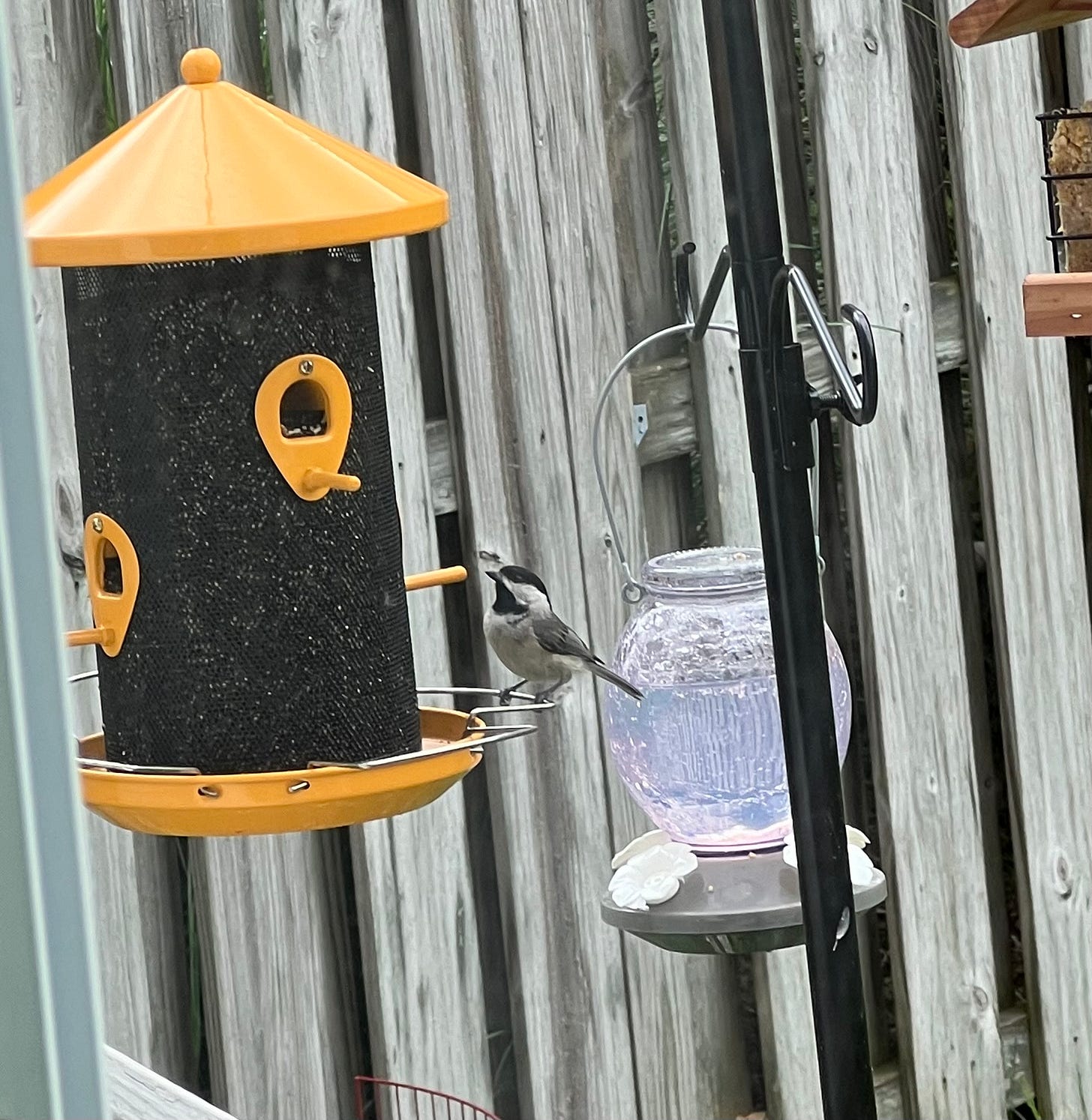One of the first things I learned about landscaping for wildlife is that a lot of different species can show up, depending on what you plant. Before, I had the mistaken notion that you just “plant native things” to help some nebulous concept of birds and butterflies.
After a native landscaper asked me what species I was trying to attract, my research began. I knew I wanted some type of chickadee, but the only other wildlife I could think of are the Red-Shouldered Hawk (who greatly enjoyed our backyard mice) and foxes that live in our community. So I ordered a bag of mixed seeds targeted towards East Coast birds and started cataloging and researching. But, after months of watching my bird feeder, I realized the one bird species I knew I wanted to see wasn’t appearing.
There are two species of chickadees in Maryland, but only one in range for our home: Carolina chickadee. Everywhere I read, people already feeding chickadees were attracting them with back sunflower seeds (a favorite of all Maryland wildlife, apparently), which I had in my mix. But more than that, the feeder needed to be accessible in a way that makes them feel safe. They also don’t need sunflower seeds so much as another rare suburban food source: insects. According to one source, Carolina chickadees (and other insectivores) need over 5000 insects per clutch to feed their hatchlings.
My mission has become:
Make my backyard feel safe for chickadees to forage
Create a variety of native food sources
Build safe spaces for chickadees to raise young
Our first step was stopping any and all use of pesticides. We’d been getting to that slowly and naturally over the last few years, part from laziness and part from concern about constant substances coating our lawn. Our only bug “problem” has been indoor ants, and my husband is a Borax-trap expert at this point. I was slightly concerned that this year, with no pesticides and insane rainfall, we’d be overrun with gnats. However, the birds keep things pretty clean. On a humid walk a few weeks ago, we even noted that the area around our home was the best gnat-free zone in the neighborhood.
Second, I got involved with my local Wild Ones chapter and picked up a number of native plants at their Spring plant swap. We knew the birds require insects that are not generalist feeders, like caterpillars that have evolved to eat only a single type of plant. After the swap, both our front and back yards are lined with a variety of flowers and shrubs native to our region. For now, the leaves feed the insects and the insects feed the birds. Eventually, the shrubs will produce berries that also support chickadees and other wildlife.
Finally, I got some new style feeders and more options for food, including mealworms and suet. It will take time for butterflies and moths to lay eggs on our new plants, and longer still for plump, delicious caterpillars to emerge. So we must artificially supplement!
So did it work? Yeah! Or I probably would not be blogging about it. We’ve had at least three Carolina chickadees coming almost daily for food and water. Our next step will be nesting areas, not just for the chickadees but also for the other wildlife attracted by our plants, bugs, seed, and water.
Follow me on iNaturalist to see what else pops up in our yard!




Tu as fait beaucoup de recherches. À notre chalet j'aime voir les sortes d'oiseaux qui y vivent.